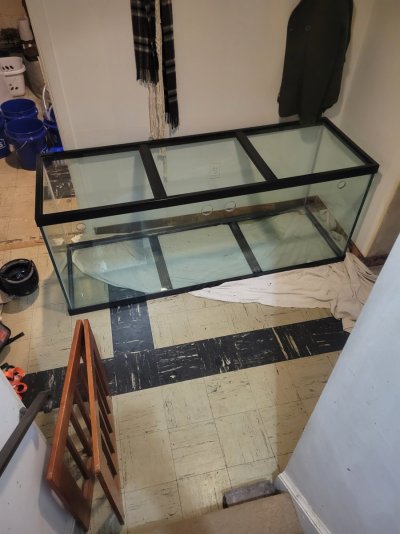I was gifted a 225 gallon tank (see attached pic). It has four holes drilled at the top of the tank. There are two close to each other in the middle and then one on the left and right side. I know these are drilled for pipes that lead to a sump, but can anyone help guide me with how to utilize these for a sump? Is there a diagram anywhere, or description what to do, what equipment to buy, etc?
Thank you!

Thank you!















